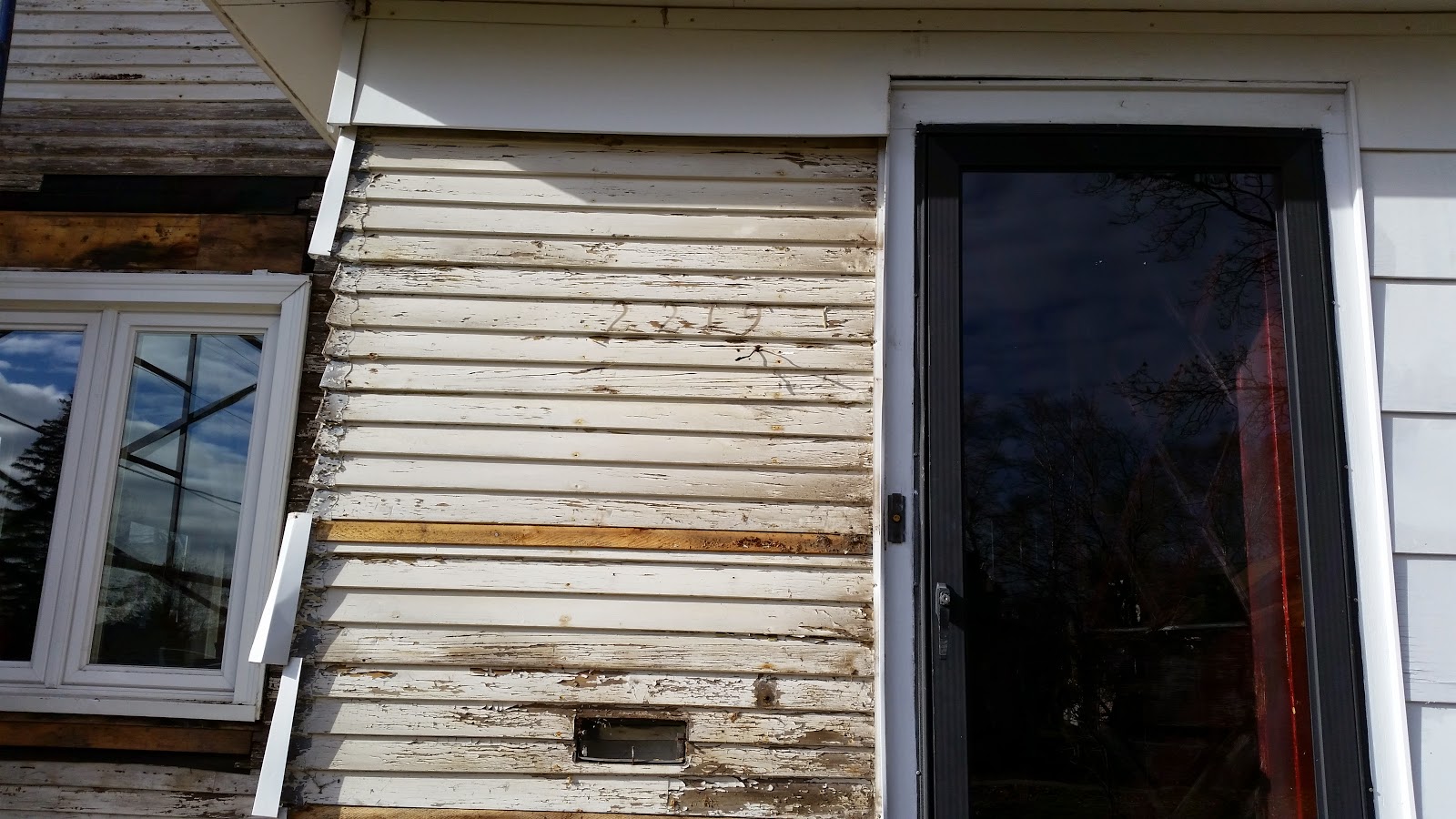So, remember those two windows we found on either side of the fireplace, and the piano window on the back side of the house? Well, we finally ordered and installed new windows. We went with standard, single panel windows, no bells and whistles, they don't open, just window and frame.

To start off with I measured the openings for each window, the two by the fireplace were exactly the same size, the piano window was same height, but about twice as wide. Sent the order in to Menards, then waited a week. I was so excited to put them in when they finally arrived, but Amber asked that I finish a couple of the projects I had already started before I go on to anything else. So, two months later, and I'm finally ready to install these three windows.

I started by taking off the siding covering the windows, then taking out the insulation and 2x4s that were put in to fill the frame when the original windows were taken out. Easy enough, everything came out as planned, but who ever did the work originally way over did it with the nails. So much so that it chewed up the original frame pretty bad, but nothing that couldn't be fixed.

Now I have 3 gaping holes on my first floor. I unwrapped all the windows, cleaned them up, and went for a dry fit, and guess what? They didn't fit. I measured exact size, didn't give myself any wiggle room, so what do to? I thought about it, they were about 1/16 to 1/8 inch too big, and vinyl, could I plane them down? Would it ruin the window? I thought I'd give it a try. I planed off a bit from the side that was too long, it was really a bit of extra vinyl from the process of making the window that was the problem. Went for another dry fit, still too big, so I took off more. A few more passes with my dad's electric planer, and another dry fit, this time it worked. It took a little muscle, but I got the first window in.


Now, how does one attach these windows? They came with no installation instructions, and they were basically small bay windows, no tab to attach to anything, no place to drill holes to screw them into the window frame. The only place that looked like there was enough material was on the exterior, and I didn't really want to drill holes into the exterior of my brand new windows, so I improvised. There was a small channel on the inside of the window that I knew would be covered up by trim at some point, so I thought I'd basically toenail them in place with screws. I did a little research, talked with a construction buddy, and my Dad, they all seemed to be OK with it. So I tested it out. I put 4 screws per side, directly into the original frame. I tested the first window, just to make sure I wouldn't have a window on my livingroom floor during some crazy blizzard. My pushing, banging, and muscle didn't seem to do anything to the window, it was solid, it wasn't moving. My father in-law told me I should just hire a professional and laughed at my work, I said nothing and thought, "If I only had the money." The other windows, after planing, went in just as quick. Of course I insulated, trimmed both the interior and exterior to its original form, and caulked anywhere that needed it.

So that's that. They look great. Our neighbors stopped by after they were installed and complimented me on my work, and how happy they were that we were doing all this work to the house. One neighbor even commented that he wouldn't have put windows in, that there's nothing better than a nice dark living room. I thought he was joking, but his wife said no, not a fan of light. The light these windows let in is just amazing, it changes the entire feeling of our home. Our new dog has even taken to taking his naps in the sunlight that is now let into our dining room and living room.
Now we have three new windows, two that probably had some sort of leaded glass in them originally, and a piano window that needs a piano. I guess I need to start perusing Craigslist for an antique piano, and start taking piano lessons.
 We finally did it. After two years in our home we finished our breakfast nook. I had added a window to bring more light in, and put up some old tin ceiling from a bar in nearby Cloquet, but that's where it stopped. It's basically been an area for dog food and extra dish towels. The nook tends to collect what we really should just toss away, except the dog food of course.
We finally did it. After two years in our home we finished our breakfast nook. I had added a window to bring more light in, and put up some old tin ceiling from a bar in nearby Cloquet, but that's where it stopped. It's basically been an area for dog food and extra dish towels. The nook tends to collect what we really should just toss away, except the dog food of course.



































































